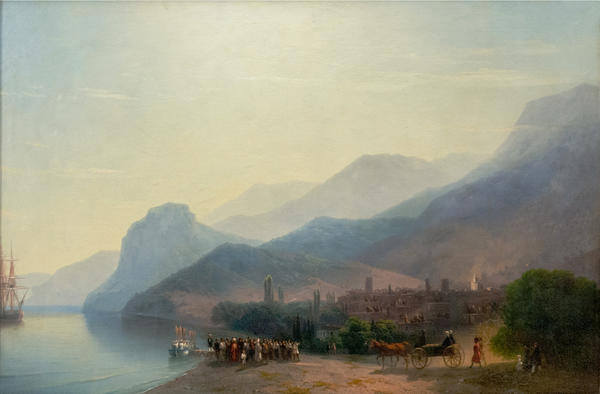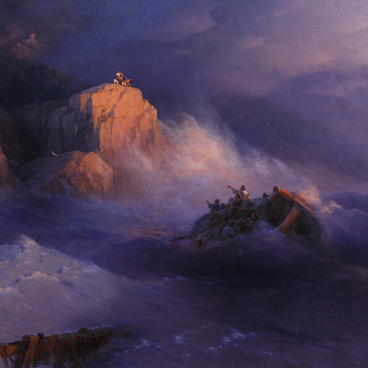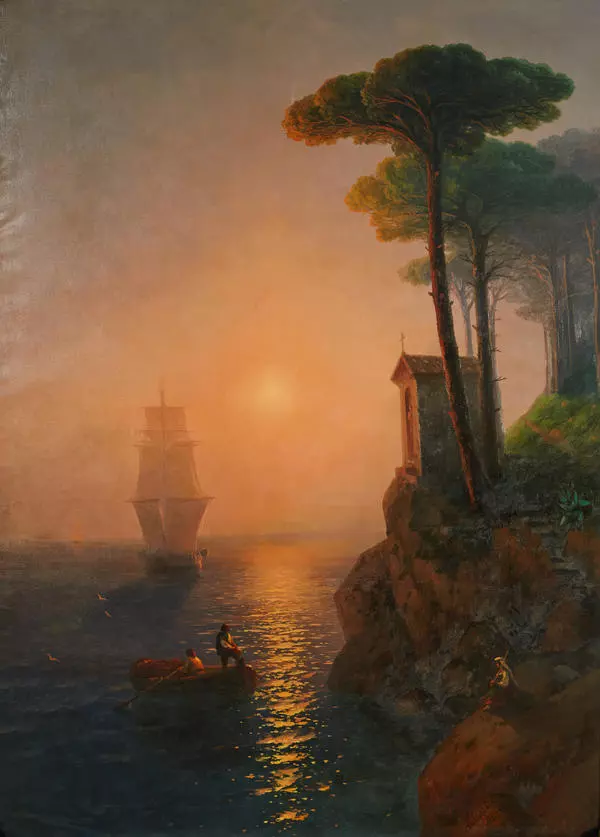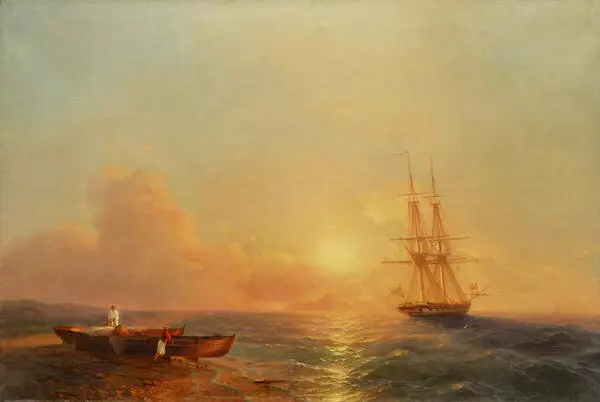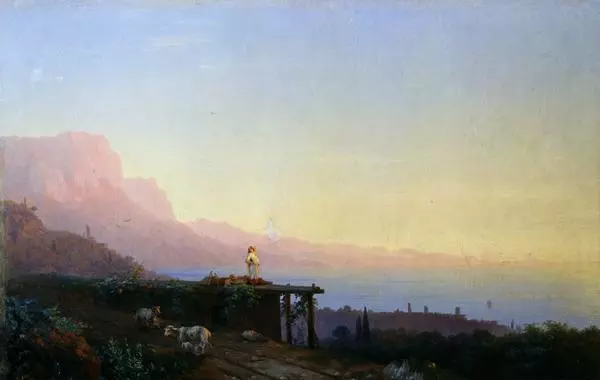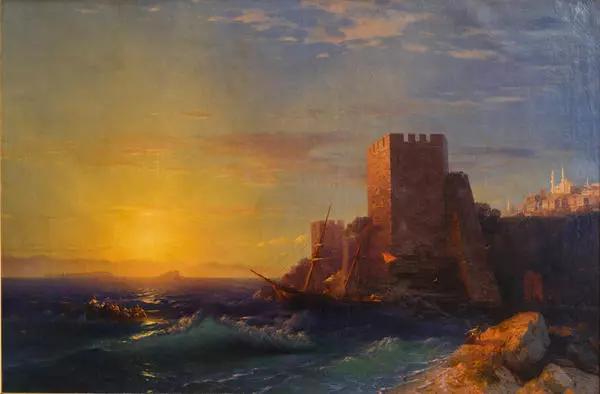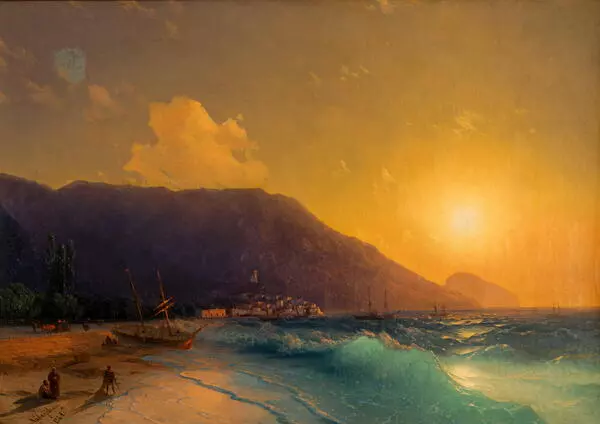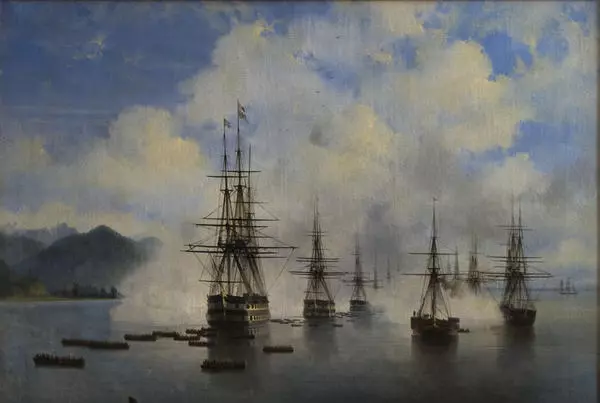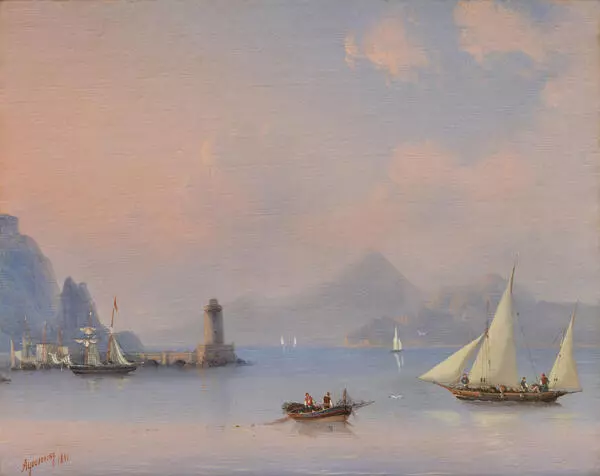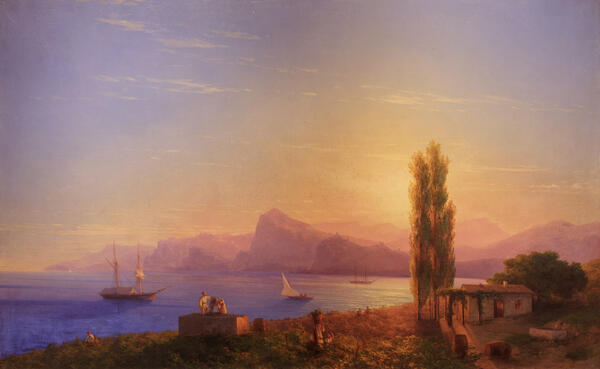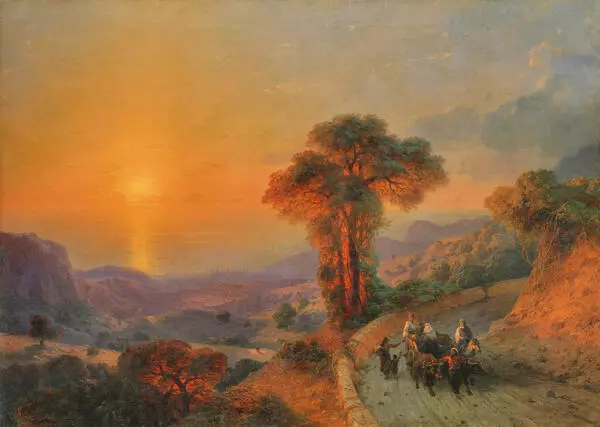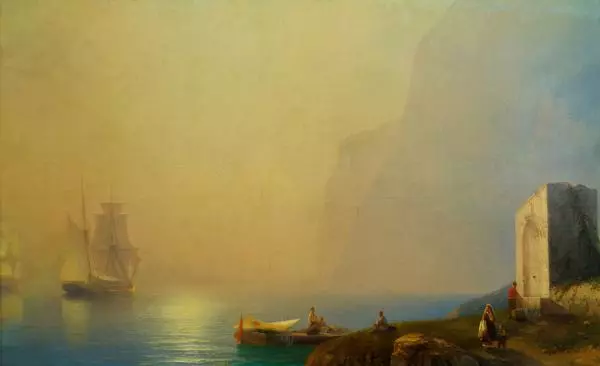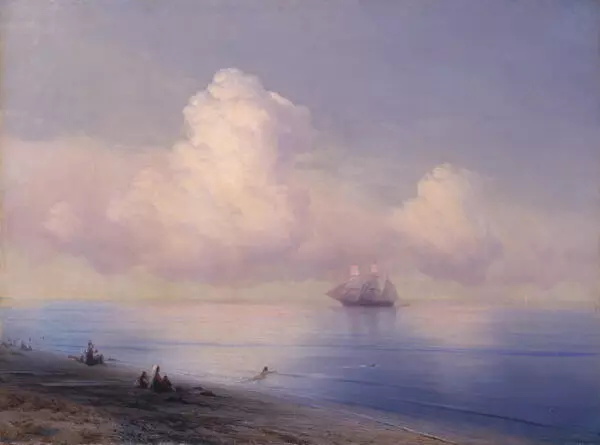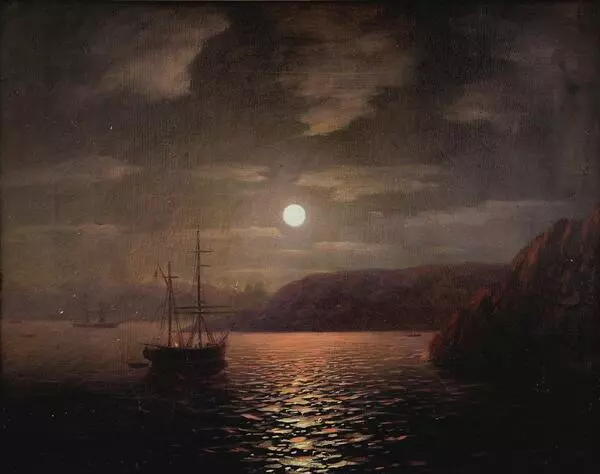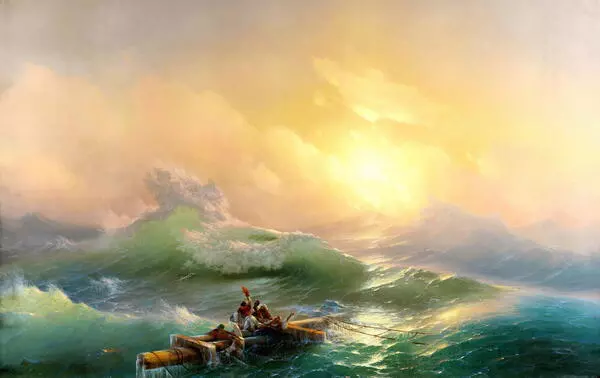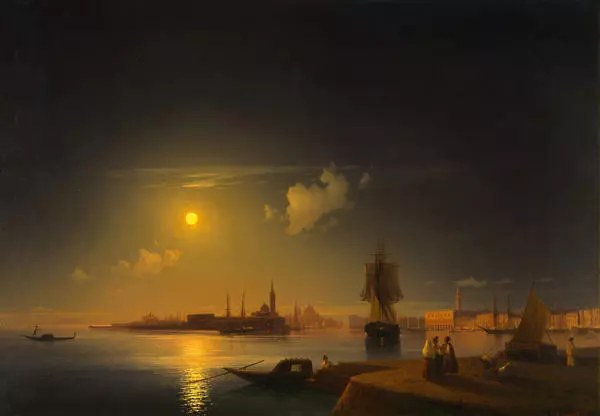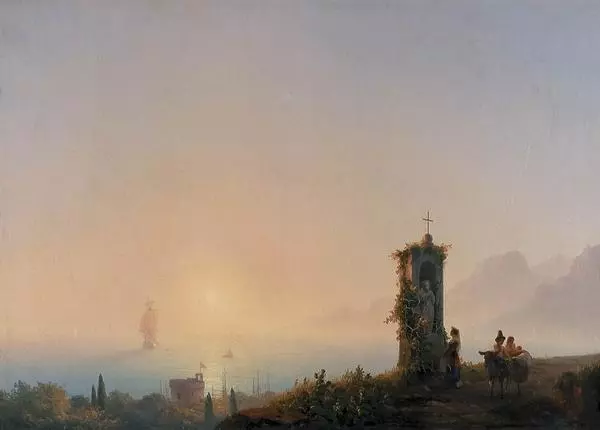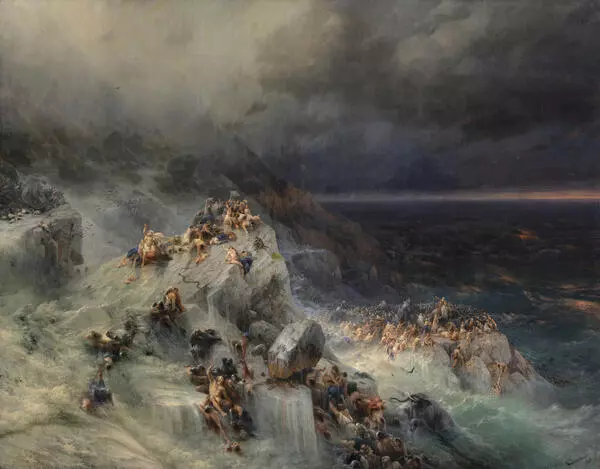In 1870s sea-pieces by Ivan Aivazovsky (1817-1900) were hugely popular. Those years were the most productive and rewarding in his life. By that time the artist became known as maestro of seascape in Russian art. Legend has it, that Emperor Nicholas I used to say, ‘Aivazovsky! I am the Tsar of the land, while you are the Tsar of the sea’. The artist was also at the peak of civic activity. As a native of Feodosia he spent his whole life supporting his native land, investing into its development, protecting the Crimean artifacts and landmarks, taking part in archeological excavations.
Panoramic views of the Black Sea and the atmosphere of coastal towns — Yalta, Alushta, Feodosia — had been a source of fascination and inspiration for Aivazovsky all his life, from early age when he was just deliberating whether to become an artist. There is a sense of peace and serenity in the warm morning hours in Alushta, as depicted in the picture. The artist reflects magnificently the soft morning light and the shimmering air on both the coast and horizon. The painter depicts Chatir-Dag — a mountainous area, with the remains of a medieval fortress, one can see a Russian Christian Orthodox church to the right on a hill in the town. The church was built in Alushta by the initiative of Count Vorontsov.
The distant view is presented in silvery tones, as if bathing in pre-dawn mist. A couple of horses pulling a cart and a group of people waiting for its arrival stand out against the morning mist, they are portrayed in more vibrant and warmer colours. Aivazovsky usually accentuated the sky and surface of the sea, but in this picture the scene on shore is presented as a more vibrant and lively one.
Researchers of Aivazovsky’s art believe that the given plot relates to one of the remarkable days in the history of Alushta. Aivazovsky quite often portrayed historical events in his pictures, even though the plot itself might not have been expressly indicative of the actual event.
The visit of Empress Maria Aleksandrovna served as subject matter for this artistic work. She visited Alushta in 1861. Having walked a long distance to marvel the sights, Her Majesty was quite tired and took a lift in a post chaise to get back. Alas, but there was nothing more grand and worthy of the Empress, than a post-cart in the town. Aivazovsky captured this very scene in his picture.
Panoramic views of the Black Sea and the atmosphere of coastal towns — Yalta, Alushta, Feodosia — had been a source of fascination and inspiration for Aivazovsky all his life, from early age when he was just deliberating whether to become an artist. There is a sense of peace and serenity in the warm morning hours in Alushta, as depicted in the picture. The artist reflects magnificently the soft morning light and the shimmering air on both the coast and horizon. The painter depicts Chatir-Dag — a mountainous area, with the remains of a medieval fortress, one can see a Russian Christian Orthodox church to the right on a hill in the town. The church was built in Alushta by the initiative of Count Vorontsov.
The distant view is presented in silvery tones, as if bathing in pre-dawn mist. A couple of horses pulling a cart and a group of people waiting for its arrival stand out against the morning mist, they are portrayed in more vibrant and warmer colours. Aivazovsky usually accentuated the sky and surface of the sea, but in this picture the scene on shore is presented as a more vibrant and lively one.
Researchers of Aivazovsky’s art believe that the given plot relates to one of the remarkable days in the history of Alushta. Aivazovsky quite often portrayed historical events in his pictures, even though the plot itself might not have been expressly indicative of the actual event.
The visit of Empress Maria Aleksandrovna served as subject matter for this artistic work. She visited Alushta in 1861. Having walked a long distance to marvel the sights, Her Majesty was quite tired and took a lift in a post chaise to get back. Alas, but there was nothing more grand and worthy of the Empress, than a post-cart in the town. Aivazovsky captured this very scene in his picture.

